Squirrels in Texas are a familiar and lively part of the state’s wildlife, seen in forests, deserts, parks, and even backyards. From energetic tree dwellers to ground-digging specialists, these rodents play important roles in local ecosystems. With their bushy tails and curious behavior, squirrels capture the attention of both nature lovers and casual observers.
There are 8 types of squirrels in Texas, each with its own size, color, habitat, and lifestyle. Some, like the Fox and Eastern Gray Squirrels, are easy to spot in city parks and wooded areas. Others, such as the Southern Flying Squirrel or Harris’s Antelope Squirrel, are more secretive and live in specific regions of the state, including deserts and forests.
This guide will help you identify all 8 types of squirrels in Texas with pictures and key facts. Watching them glide through trees or scurry across rocky ground can give you a deeper appreciation for the wildlife around you.
Comon Squirrels Found in Texas
Eastern Gray Squirrel (Sciurus carolinensis)
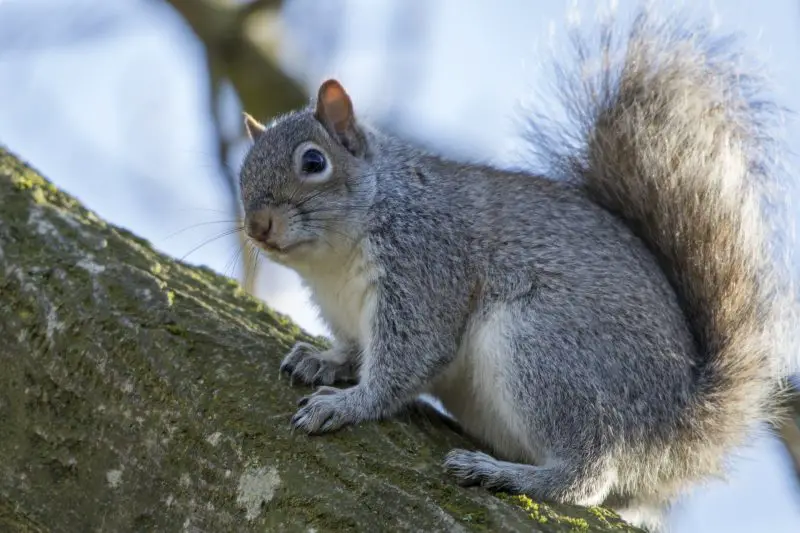
The Eastern Gray Squirrel is one of the most recognizable and widespread tree squirrels in Texas and much of the eastern United States. Typically, adults measure about 16 to 20 inches from nose to tail tip, with the tail itself comprising nearly half of that length. Their fur is primarily a soft, silvery-gray shade mixed with brown tones, complemented by a pure white underside and a large, bushy tail that fluffs out and acts as a balancing rudder and blanket during cold weather. This species’ keen eyesight and sharp claws enable it to effortlessly navigate tree branches and leap across significant gaps between trees.
Highly adaptable, Eastern Gray Squirrels thrive in a variety of habitats including hardwood forests, suburban neighborhoods, and city parks where food is plentiful and shelter is abundant. Their diet is diverse, consisting mainly of acorns, walnuts, hickory nuts, seeds, and fruits, but they are opportunistic feeders and may occasionally eat bird eggs or even small insects when other food sources are scarce. They have an impressive ability to store food by burying nuts in numerous scattered caches to retrieve during winter, which also helps in forest regeneration.
Behaviorally, these squirrels are active and social during daylight hours. They communicate with a complex system of vocalizations—ranging from soft chattering to loud alarm barks—to warn others of predators or to establish territory. Eastern Gray Squirrels build nests known as dreys, which are made from twigs and leaves, usually located high in tree branches, or they may occupy hollow tree cavities. During cold spells, they often huddle together in these nests to conserve heat.
A fascinating fact about Eastern Gray Squirrels is their incredible spatial memory, allowing them to recover up to 90% of their buried nuts months after hiding them. Their range within Texas spans most of the eastern and central parts of the state, especially in areas with mature hardwood forests and urban green spaces, making them one of the most commonly encountered squirrels by Texans.
Fox Squirrel (Sciurus niger)
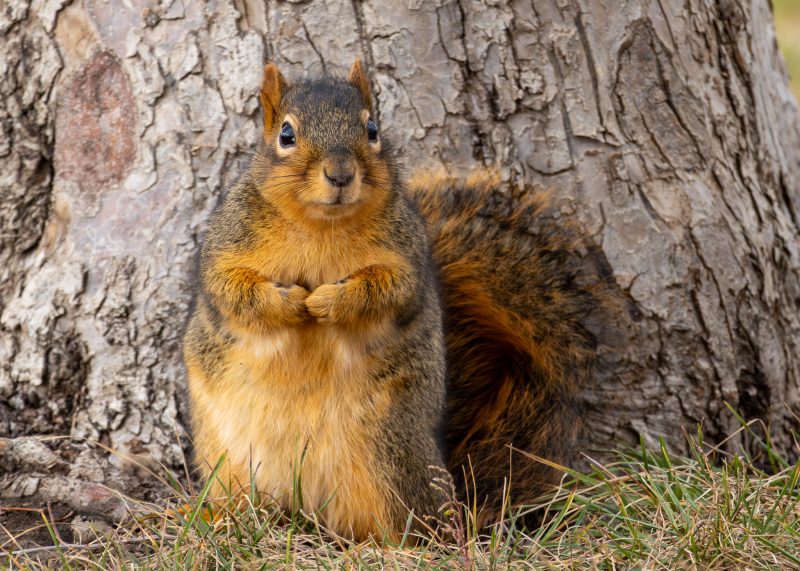
The Fox Squirrel stands out as the largest tree squirrel species in Texas, with adults typically ranging from 18 to 27 inches in length, including a notably bushy tail often longer than the body itself. Its fur color varies widely, from rusty reddish-brown to yellowish-gray, often interspersed with black, which offers excellent camouflage in the dappled sunlight of open woodlands and forest edges. The Fox Squirrel’s large size and robust build give it a somewhat lumbering but powerful appearance compared to the more agile Eastern Gray Squirrel.
Preferring mixed habitats that combine mature hardwood trees with open grassy understories, Fox Squirrels are often spotted foraging on the ground more than their gray cousins. Their diet is broad and includes acorns, hickory nuts, pecans, fruits, fungi, and even insects, reflecting their opportunistic nature. Unlike more strictly arboreal squirrels, Fox Squirrels frequently cache food in shallow ground holes and tree cavities, relying on both ground and tree habitats for survival.
Fox Squirrels are territorial and vocal, using a range of harsh, raucous calls to communicate and defend their home range. They build large nests called dreys, composed of leaves and twigs, situated high in the branches or inside hollow trees. During winter, these nests serve as vital shelters against the cold. Their daily activity peaks during early morning and late afternoon, avoiding the midday heat of Texas summers.
One interesting behavior of Fox Squirrels is their adaptability to fragmented landscapes and urban environments, where they can thrive in city parks and suburban backyards. Their distribution covers most of Texas, especially central and eastern regions, where their preference for open woodlands and savanna-like habitats fits well with the local environment.
Rock Squirrel (Otospermophilus variegatus)
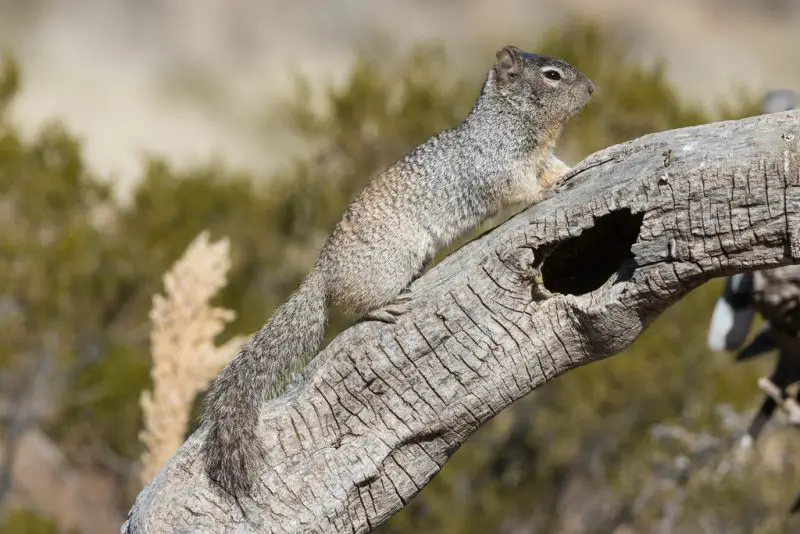
The Rock Squirrel is a ground-dwelling member of the squirrel family uniquely adapted to the rugged and arid environments of West Texas. Adult Rock Squirrels measure about 16 to 20 inches long, with a relatively short, bushy tail that is less prominent than that of tree squirrels. Their fur is mottled gray-brown with a distinctive white belly, providing excellent camouflage against rocky terrains. Unlike tree squirrels, Rock Squirrels spend most of their time on the ground, expertly maneuvering rocky outcrops and cliffs where they burrow and seek shelter.
These squirrels inhabit desert scrublands, rocky hillsides, and canyon areas where they dig complex burrows for protection from predators and extreme weather. Their omnivorous diet includes seeds, nuts, fruits, insects, small reptiles, and occasionally eggs. They forage primarily during daylight hours, using their sharp senses to detect food and danger. Rock Squirrels are known to sunbathe on exposed rocks, raising their body temperature and using their keen eyesight to monitor for threats.
Behaviorally, Rock Squirrels are territorial and use scent marking to delineate their home ranges. They communicate through a variety of vocalizations including alarm calls to warn conspecifics of predators. Though not as arboreal as tree squirrels, they are adept climbers and frequently escape to rocky ledges and crevices when threatened. Their burrows also serve as cool refuges from the intense Texas desert heat.
A notable fact about Rock Squirrels is their boldness; they have been known to confront potential threats and can be surprisingly aggressive when cornered. Their distribution in Texas is primarily concentrated in the western desert and mountainous regions, including the Trans-Pecos area, where their presence is a distinctive part of the local wildlife amidst rugged landscapes.
Black-tailed Prairie Dog (Cynomys ludovicianus)
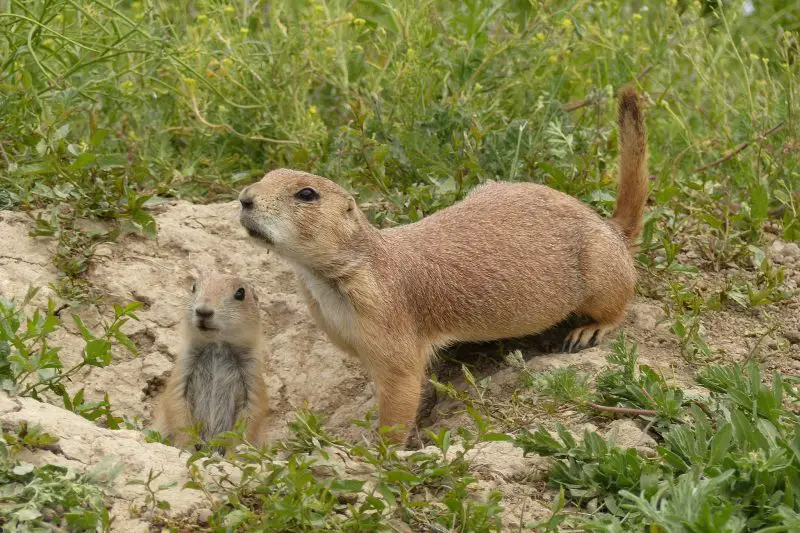
The Black-tailed Prairie Dog, while not a classic tree-climbing squirrel, belongs to the squirrel family and is a prominent ground squirrel species in northern Texas. Adults measure about 14 to 17 inches long, including their short black-tipped tails which give them their name. Their fur is a sandy tan or light brown color, which helps them blend into the grassy plains and prairies they inhabit. Unlike arboreal squirrels, these prairie dogs are highly social and live in large colonies known as “towns.”
Prairie dogs are famous for their complex burrow systems, which include numerous tunnels and chambers used for nesting, food storage, and protection from predators. These underground homes can cover vast areas and support entire prairie dog communities. Above ground, they are often seen standing upright on their hind legs, keeping watch for danger, and communicating through a series of barks, chirps, and whistles to warn others.
Their diet mainly consists of grasses, roots, seeds, and other plant materials. As herbivores, prairie dogs play a vital role in grassland ecosystems by influencing plant diversity and serving as prey for numerous predators like hawks, coyotes, and snakes. Their grazing activities also help maintain healthy prairie landscapes.
In Texas, Black-tailed Prairie Dogs are primarily found in the northern Panhandle region, where extensive grasslands provide ideal habitat. Conservation efforts have been implemented to protect prairie dog colonies due to their ecological importance and declining populations in some areas.
Harris’s Antelope Squirrel (Ammospermophilus harrisii)
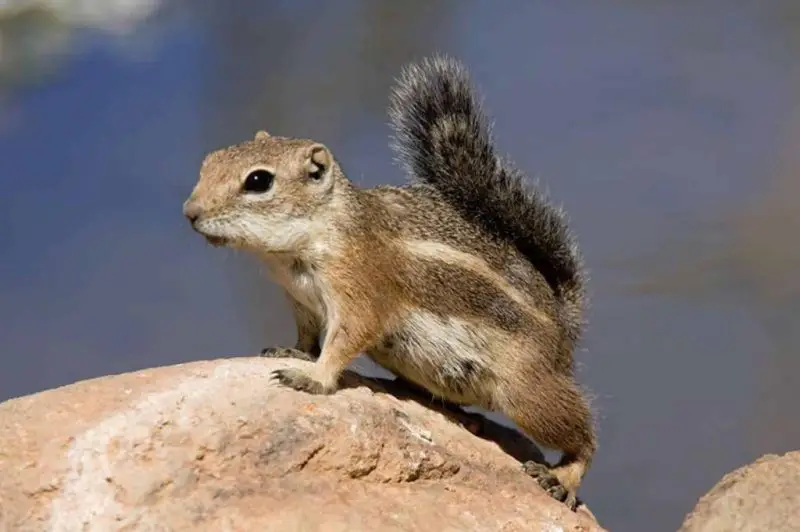
Harris’s Antelope Squirrel is a small, energetic ground squirrel native to the southwestern desert regions of Texas. Adult squirrels measure approximately 7 to 10 inches long, with a slender body and a distinctive white stripe running longitudinally down each side of their back, which sets them apart from other squirrel species. Their fur is generally light brown or grayish, allowing excellent camouflage against the rocky, sandy soil of their desert habitat.
This squirrel inhabits arid desert scrublands, rocky hills, and open areas with sparse vegetation. Harris’s Antelope Squirrels are diurnal and spend much of the day actively foraging for food. Their diet includes a mix of seeds, nuts, insects, small plants, and occasionally small reptiles, making them omnivorous and well adapted to the desert’s limited resources.
Behaviorally, they are fast and agile, often darting between rocks and shrubs to escape predators. These squirrels are known to dig shallow burrows or take shelter in crevices to avoid the extreme heat of the desert sun. Unlike some tree squirrels, they spend almost all their time on or near the ground, relying on speed and camouflage for protection.
In Texas, Harris’s Antelope Squirrels are mainly found in the southwestern part of the state, including parts of the Trans-Pecos region and near the Mexican border. Their presence in these harsh desert environments highlights their adaptability and the ecological diversity of Texas’s wildlife.
Southern Flying Squirrel (Glaucomys volans)
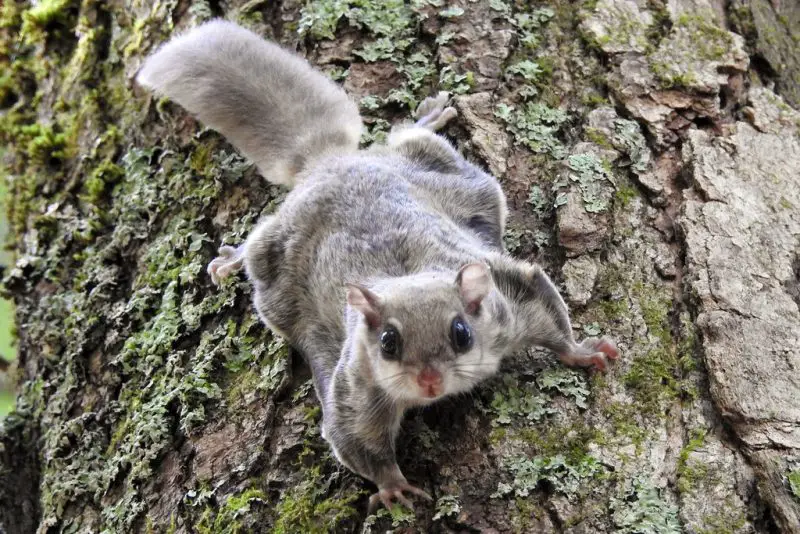
The Southern Flying Squirrel is a small, nocturnal tree squirrel known for its remarkable ability to glide between trees using a furry membrane called the patagium that stretches from its wrists to its ankles. Adults are about 8 to 10 inches long including their fluffy tails, and they have soft, gray-brown fur with a white underside. Their large, dark eyes enhance night vision, allowing them to navigate the forests under cover of darkness.
Primarily active at night, Southern Flying Squirrels spend daylight hours resting in tree cavities or leaf nests, often sharing these dens with family members for warmth. Their diet is omnivorous and varied, consisting of nuts, seeds, fruits, fungi, insects, bird eggs, and even small vertebrates. They are known to store food in their nests to survive through the winter months.
Behaviorally, these squirrels are social and communicate with soft chirps and squeaks. Their gliding ability can cover distances of up to 150 feet, enabling them to evade predators and efficiently move through the dense forest canopy. This ability also allows them to access scattered food resources across large areas.
In Texas, Southern Flying Squirrels are found mainly in the eastern forested regions, where mature hardwood and mixed forests provide ample habitat. Their secretive, nocturnal habits mean they are rarely seen, but they play an important role in forest ecosystems as seed dispersers and prey for owls and other nocturnal predators.
Mexican Ground Squirrel (Ictidomys mexicanus)
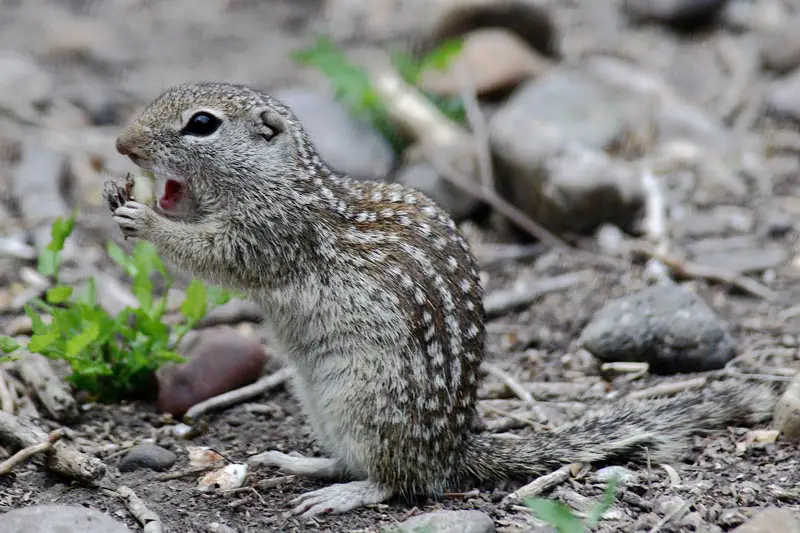
The Mexican Ground Squirrel is a medium-sized ground squirrel species native to southern Texas and areas near the Mexico border. Adults typically measure 10 to 12 inches in length, with a tail that is shorter and less bushy than tree squirrels. Their fur is a light brown or grayish color with faint stripes or spots on their back, providing camouflage in their preferred habitats.
This species favors open grasslands, scrubby areas, and farmlands where it digs burrows for shelter and protection. Mexican Ground Squirrels are diurnal, spending their days foraging on the ground for seeds, grains, insects, and occasionally green vegetation. Their burrow systems can be quite extensive and include separate chambers for nesting and food storage.
Mexican Ground Squirrels are known for their alert and cautious behavior, often standing on their hind legs to survey their surroundings for predators like hawks, snakes, and coyotes. They use vocalizations such as chirps or whistles to warn nearby squirrels of danger and can quickly retreat to their burrows when threatened.
In Texas, these squirrels are primarily found in the southernmost regions, including the Rio Grande Valley and other border counties. Their presence highlights the rich biodiversity of southern Texas grasslands and the importance of preserving open habitats for native wildlife.
Plains Pocket Gopher (Geomys bursarius)
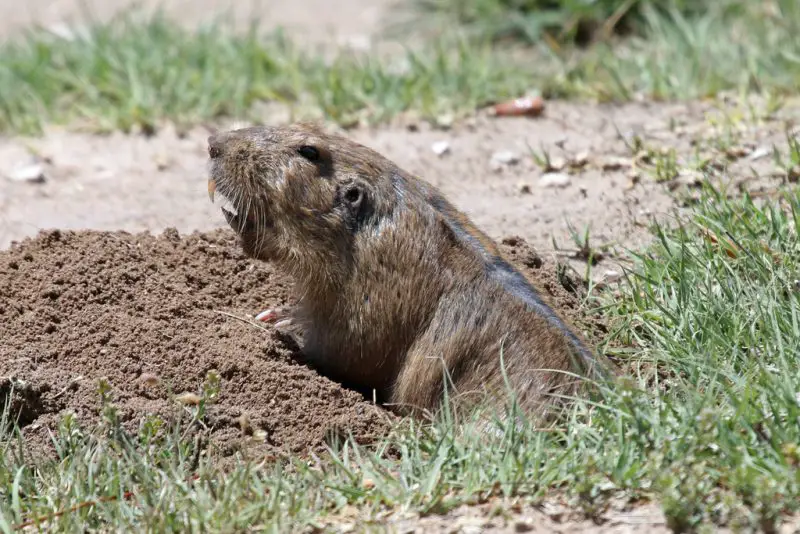
Though not a squirrel, the Plains Pocket Gopher is often grouped with ground rodents in Texas due to its burrowing lifestyle. These gophers are medium-sized rodents measuring about 8 to 10 inches long with stout bodies and short tails. Their fur ranges from sandy brown to dark gray, aiding in camouflage underground and in grassy habitats.
Pocket Gophers are exceptional diggers, using their large forelimbs and sharp claws to create complex tunnel systems underground. These burrows serve as shelter, food storage, and protection from predators. Their diet mainly consists of roots, tubers, bulbs, and underground plant parts, which they access easily through their digging behavior.
Behaviorally, Plains Pocket Gophers are solitary and territorial animals, spending most of their lives below ground. They come out rarely and mostly at dusk or dawn to feed on surface vegetation. Their burrowing activities play a crucial role in soil aeration and nutrient cycling, benefiting the ecosystem.
In Texas, Plains Pocket Gophers are found mainly in the northern and central parts of the state, especially in prairies, grasslands, and agricultural fields. While less visible than squirrels, they are an important part of Texas’s native rodent community and ecosystem functioning.
FAQ About Squirrels in Texas
What types of squirrels are found in Texas?
Texas is home to a wide variety of squirrels, including both tree and ground-dwelling species. Common types include the Eastern Gray Squirrel, Fox Squirrel, Rock Squirrel, Southern Flying Squirrel, Harris’s Antelope Squirrel, and Mexican Ground Squirrel. Ground rodents like the Black-tailed Prairie Dog and Plains Pocket Gopher are also related to the squirrel family.
What is the most common squirrel in Texas?
The Fox Squirrel is considered the most widespread and commonly seen squirrel in Texas. It thrives in open woodlands, forest edges, parks, and suburban areas across the state.
Are flying squirrels found in Texas?
Yes, the Southern Flying Squirrel is native to the eastern forested regions of Texas. However, it is nocturnal and rarely seen during the day, making it less familiar to most people.
Where are Rock Squirrels found in Texas?
Rock Squirrels are most common in the rocky, arid areas of West Texas, particularly in the Trans-Pecos region. They prefer cliffs, canyons, and dry scrublands where they can burrow and sunbathe on rocks.
Do squirrels hibernate in Texas?
Most squirrel species in Texas do not hibernate. Instead, they remain active throughout the year, although they may reduce activity during extreme heat or cold. Some ground squirrels and gophers may go dormant for short periods in very hot or dry conditions.
What do squirrels eat in Texas?
Squirrels in Texas have varied diets depending on the species. Tree squirrels like the Fox and Eastern Gray eat nuts, seeds, fruits, and fungi. Ground squirrels may consume grains, seeds, roots, insects, and even small animals.
Are prairie dogs considered squirrels?
Yes, prairie dogs are part of the squirrel family (Sciuridae), even though they live in burrows and don’t climb trees. In Texas, the Black-tailed Prairie Dog is the most well-known species and is found in the Panhandle grasslands.
Can squirrels be found in urban areas in Texas?
Absolutely. Species like the Fox Squirrel and Eastern Gray Squirrel adapt well to urban and suburban environments. They are frequently seen in city parks, on power lines, and in residential yards.
Are squirrels protected in Texas?
Some native squirrel species are protected under local wildlife laws, especially if they are threatened or declining in certain areas. However, common species may be managed with permits in cases of nuisance or property damage.

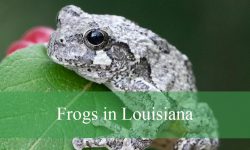
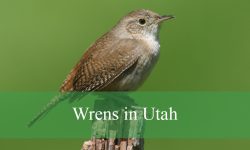

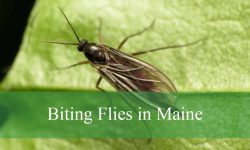
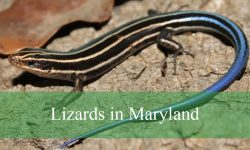

Forgot the Black Squirrel. They are prominent in pockets around southeast Texas.
Thanks for your info